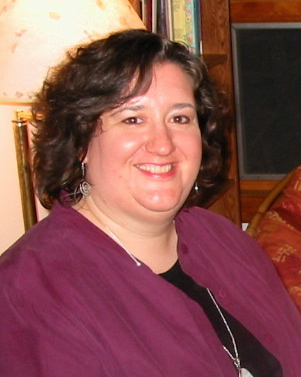Member Spotlight
Martha Lietz
Niles West High School, Skokie, Illinois
I am a second generation AAPT member: my father, Gerry Lietz, took me to my first AAPT meeting in London, Ontario in the summer of 1978 on a family vacation. I was 13 years old. At that time, the only aspect of the meeting I was able to appreciate was the picnic. After completing my Master’s degree in physics at Carnegie Mellon in 1989, I moved home to pursue a teaching certificate. My father encouraged me to join AAPT then, and I have been a member ever since. It is a significant understatement to say that I would not be the teacher I am today without AAPT, both the national organization and the Chicago section.
I applied to the PTRA program in 1992 and attended my first national meeting as a high school teacher in Orono, Maine. Participating in the PTRA trainings had a huge impact on my teaching and on my students’ learning. The days of training provided many strategies for teaching about sound and music, physics of toys, cosmology and many other topics. I still use many of Robert Morse’s ideas from the electrostatics workshop in my classroom 24 years later. I gained confidence as a teacher by working with other PTRAs to present these same workshops to teachers in the Chicago area. I continued to participate in the PTRA program through 1998, both attending the trainings and presenting workshops in Illinois. I confess my favorite part of the national meetings are the workshops. Spending several hours focusing on one content area really helps solidify the learning for me, and ensures my teaching will be transformed by that learning. I have enjoyed workshops on PRISMs, CASTLE, Physics of Cell Phones, Cognitive Science for Physics Teachers, Research-Based Alternatives to Traditional Problems, Video Analysis and many, many more.
I have gained much from the Chicago Section AAPT meetings and its members as well. I am blessed to live in a region where AAPT sections and local physics alliances such as ISPP and Physics Northwest thrive and provide opportunities for physics teachers to collaborate and support each other. The section meetings allow local teachers to hear from education researchers such as Aaron Titus, Chandralehka Singh, Eric Mazur and others, even if they can’t attend the national meeting. And the AAPT-affiliated alliances allow teachers to meet monthly and share ideas.
I have taken the opportunity to give back to AAPT by presenting workshops and serving on committees. I served on the Educational Technologies committee about 15 years ago, and more recently served as chair of the Committee on Physics in High Schools. I followed in my father’s footsteps and served as Section Rep for the Chicago Section for several years. I’ve presented workshops on scroll bars in spreadsheets, on TIPERs in the high school classroom, and on the new AP Physics 1 and 2 courses. This past year I had the opportunity to work with a committee that organized and facilitated the first High School Physics Teacher Camp. The camp provided high school teachers with an organic, self-organized professional development and networking experience where we could both hear from PER researchers and share ideas with each other. It was an incredible experience, and reinforced for me the notion that the more I give to AAPT, the more I get in return. I encourage everyone reading this to put that theory to the test and see that it will work for you as well.
I am deeply grateful to both the national AAPT and the Chicago Section for all the opportunities they have provided me to grow as a teacher, and to share ideas with other teachers. I look forward to many more local and national meetings and the opportunities they provide to network and learn.


